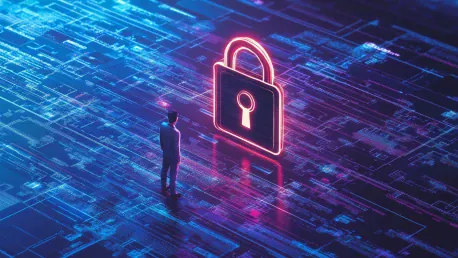The newly enacted Minnesota law mandates that public school districts, charter schools, and colleges report cybersecurity incidents, including ransomware or network attacks. This requirement grants a systematic approach to addressing cybersecurity threats, aimed at minimizing risks and fortifying defenses against cyber attacks. The reporting is not limited to educational institutions but also extends to local governments and state agencies, creating a comprehensive system for incident tracking and support. This move represents a vital step towards securing critical infrastructure and public entities from the ever-growing threat landscape. By ensuring that incidents are reported and analyzed, Minnesota aims to create a culture of vigilance and preparedness across the board.
This legislation comes at a time when cyberattacks have become increasingly sophisticated and widespread, targeting sectors that were traditionally considered low-risk. By mandating the reporting of all cybersecurity incidents, the state aims to collect valuable data that can be used to bolster defenses not just for educational institutions but for all public entities. This initiative reflects a broader understanding of the importance of cybersecurity in maintaining public trust and the smooth operation of essential services. The success of this law could serve as a blueprint for other states and sectors to follow, highlighting the critical need for a unified approach to cyber threats.
Centralizing and Anonymizing Data
The core objective of the Minnesota law is to centralize and anonymize the data from the reported incidents. By doing so, the law ensures that sensitive details are not publicly disclosed, unlike the requirements in California and Maine. Instead, the collected information will be shared with “appropriate organizations” to allow policymakers and officials to analyze the modus operandi of cyber threats and craft robust strategies to enhance security measures. This approach aims to protect the privacy of the affected institutions while still providing valuable data for analysis. The anonymized data can help identify trends and common vulnerabilities, leading to more effective prevention and response strategies. By centralizing the data, Minnesota hopes to create a more coordinated and informed response to cybersecurity threats.
The anonymized data approach allows the state to maintain a delicate balance between transparency and privacy. Ensuring that specific details are not publicly disclosed can prevent unnecessary panic while still enabling authorities to craft informed policies. By pooling data, the state can undertake a comprehensive analysis of various cyber threats, thus helping identify patterns and potential weaknesses. This methodical gathering and dissemination of information can empower other sectors to adopt similar protective measures, fostering a more secure and resilient public infrastructure. The initiative underscores the importance of a coordinated effort in cyber defense and sets a precedent for other jurisdictions to consider.
The Vulnerability of Educational Institutions
The law incorporates a proactive stance towards cybersecurity amidst rising concerns over the vulnerability of schools to cyber attacks. Educational institutions, given their extensive networks and abundant sensitive data, have become prime targets for cybercriminals. The importance of such protective measures was underscored in 2023 when Minneapolis Public Schools became a victim of a ransomware attack. Attackers publicly leaked sensitive files, highlighting the critical need for stringent cybersecurity protocols and effective incident management. Schools often lack the resources and expertise to defend against sophisticated cyber threats. This makes them attractive targets for cybercriminals looking to exploit vulnerabilities. The Minnesota law aims to address this by providing a framework for reporting and responding to incidents, helping schools to better protect their data and networks.
In addition to creating a reporting framework, the law also underscores the necessity for educational institutions to adopt a more proactive approach to cybersecurity. Schools must prioritize cybersecurity training for staff and students, implement regular system audits, and collaborate with cybersecurity experts. This systematic approach not only prepares them for potential attacks but also helps in swiftly mitigating damage when incidents occur. The involvement of local governments and state agencies further strengthens the protective net, ensuring that educational institutions are not isolated in their efforts. By fostering a culture of vigilance and preparedness, the law aims to create a robust defense mechanism that can withstand evolving cyber threats.
Broader Implications for Other Sectors
The broader implications of this legislation suggest a push towards more efficient reporting and management systems for cybersecurity across various sectors. Other critical industries facing high cybersecurity risks, according to a November report by Moody’s Ratings, include automobile manufacturers, finance companies, mass transit, ports, and oil and gas companies. The report also noted an elevated global cyber risk score for the education and nonprofit sectors from “moderate” to “high” between 2022 and 2024. This highlights the need for a comprehensive approach to cybersecurity that extends beyond the education sector. By implementing similar reporting requirements across different industries, governments can create a more resilient and secure infrastructure. The Minnesota law serves as a model for other states and sectors to follow, promoting a culture of transparency and accountability in cybersecurity.
As cyber threats continue to escalate, the necessity for a multi-sectoral approach becomes increasingly apparent. Implementing uniform reporting standards across diverse industries can facilitate the sharing of critical information, thus fortifying collective defenses. By examining Minnesota’s legislative framework, other sectors can derive valuable insights and adopt analogous measures to safeguard vital operations. In fostering a collaborative network, where information flows seamlessly across boundaries, the probability of identifying and neutralizing threats before they cause significant damage increases. This collaborative endeavor underscores the imperative of a holistic and integrated cybersecurity strategy, ultimately contributing to national and global security.
The Resource Gap in Cybersecurity
Addressing these nearly ubiquitous threats, the State Educational Technology Directors Association’s report pointed out that cybersecurity was the top technology priority for state leaders in 2024. However, the report also highlighted a significant gap in resources, with only 8% of surveyed educational technology leaders across 46 states believing their state provides sufficient funds to combat cyber threats. This resource gap poses a significant challenge to the effectiveness of cybersecurity measures. Without adequate funding, schools and other institutions may struggle to implement the necessary protections and respond effectively to incidents. The Minnesota law highlights the importance of addressing this gap and ensuring that institutions have the resources they need to defend against cyber threats.
Bridging this resource gap is critical for the effective implementation of cybersecurity measures. Enhanced funding and resource allocation can enable schools and institutions to invest in advanced security technologies, conduct comprehensive training programs, and hire specialized personnel. By drawing attention to this disparity, Minnesota’s legislation calls on policymakers to prioritize resource allocation, ensuring that all entities are adequately equipped to face modern cyber threats. Addressing the financial deficiency is pivotal, as it directly impacts the ability of institutions to establish robust defenses and efficiently manage incidents, thus fortifying their cybersecurity framework against potential adversaries.
Federal-Level Considerations
The Minnesota law contributes to the critical discourse on whether schools and government entities should be required to publicly disclose details of cyberattacks. Currently, this remains an open question at the federal level, where the finalization of a proposed Biden administration rule on national cybersecurity incident reporting is pending. As per the draft rule by the Cybersecurity and Infrastructure Security Agency (CISA), school districts with 1,000 or more students and all state education agencies would need to report disruptive cyber incidents within 72 hours or within 24 hours of paying a ransom. However, implementation under the Cyber Incident Reporting for Critical Infrastructure Act of 2022 (CIRCIA) is unlikely to begin until 2026 due to regulatory delays.
The pending federal regulations highlight the ongoing debate over the best approach to cybersecurity reporting. While some argue for greater transparency and public disclosure, others emphasize the need to protect sensitive information and avoid unnecessary panic. The Minnesota law strikes a balance by anonymizing data while still providing valuable insights for policymakers and officials. This balanced approach can serve as a reference point for federal regulations, steering the discourse towards a harmonized strategy that secures public trust and fosters a collaborative effort in combating cyber threats.
A Collaborative Effort for Enhanced Cybersecurity
The newly enacted Minnesota law requires public school districts, charter schools, and colleges to report cybersecurity incidents, including ransomware and network attacks. This systematic approach aims to minimize risks and strengthen defenses against cyber attacks. Reporting extends beyond educational institutions to include local governments and state agencies, creating a comprehensive system for incident tracking and support. This move represents a significant step towards securing critical infrastructure and public entities from the increasingly sophisticated and widespread threat landscape. By ensuring that incidents are reported and analyzed, Minnesota aims to foster a culture of vigilance and preparedness.
This legislation comes when cyberattacks have become more advanced and widespread, targeting sectors once considered low-risk. Mandating the reporting of all cybersecurity incidents allows the state to gather valuable data to enhance defenses for all public entities. This initiative underscores the importance of cybersecurity in maintaining public trust and ensuring essential services operate smoothly. The success of this law could serve as a model for other states and sectors, emphasizing the need for a unified approach to cyber threats.









